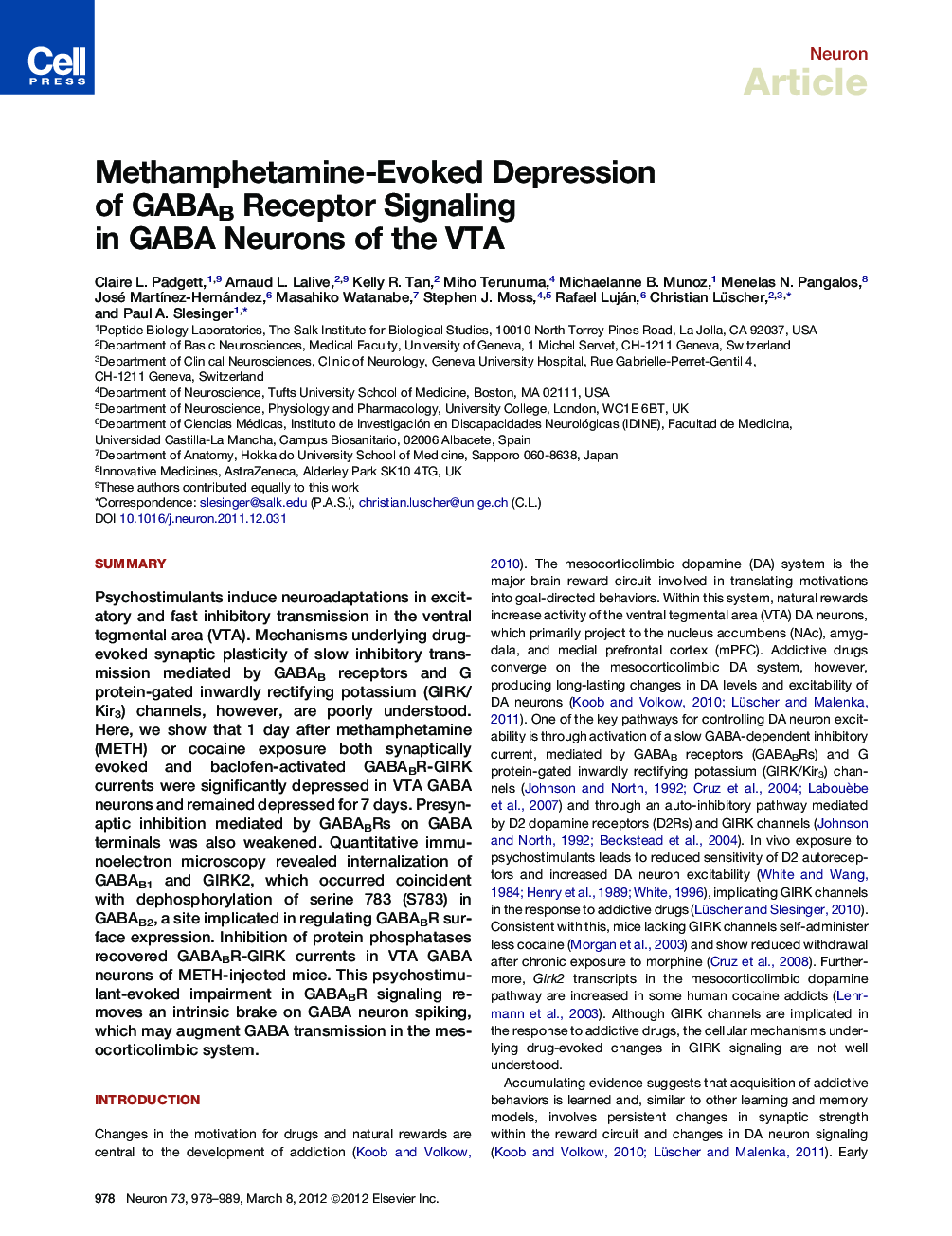| Article ID | Journal | Published Year | Pages | File Type |
|---|---|---|---|---|
| 4321454 | Neuron | 2012 | 12 Pages |
SummaryPsychostimulants induce neuroadaptations in excitatory and fast inhibitory transmission in the ventral tegmental area (VTA). Mechanisms underlying drug-evoked synaptic plasticity of slow inhibitory transmission mediated by GABAB receptors and G protein-gated inwardly rectifying potassium (GIRK/Kir3) channels, however, are poorly understood. Here, we show that 1 day after methamphetamine (METH) or cocaine exposure both synaptically evoked and baclofen-activated GABABR-GIRK currents were significantly depressed in VTA GABA neurons and remained depressed for 7 days. Presynaptic inhibition mediated by GABABRs on GABA terminals was also weakened. Quantitative immunoelectron microscopy revealed internalization of GABAB1 and GIRK2, which occurred coincident with dephosphorylation of serine 783 (S783) in GABAB2, a site implicated in regulating GABABR surface expression. Inhibition of protein phosphatases recovered GABABR-GIRK currents in VTA GABA neurons of METH-injected mice. This psychostimulant-evoked impairment in GABABR signaling removes an intrinsic brake on GABA neuron spiking, which may augment GABA transmission in the mesocorticolimbic system.
► Methamphetamine depresses GABABR evoked GIRK currents in VTA GABA neurons for days ► The mechanism involves dephosphorylation of GABABRs and removal from surface ► Methamphetamine also weakens GABABR presynaptic inhibition on GABA terminals ► The impairment in GABABR signaling removes an intrinsic brake on GABA neuron firing
